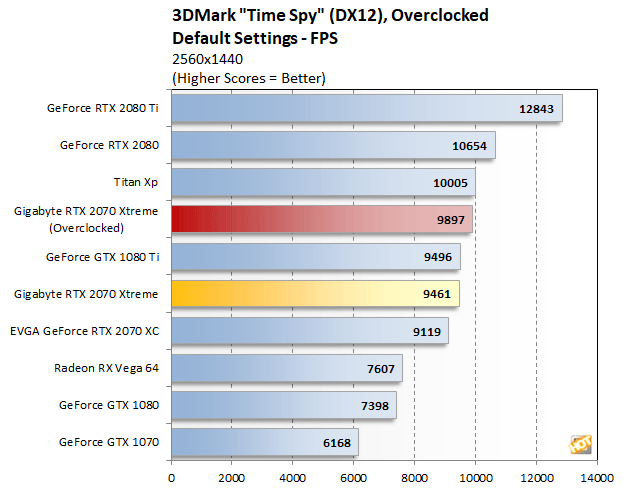Gigabyte Aorus GeForce RTX 2070 Xtreme Review: Overclocked, Custom Outputs
We also spent a little time overclocking the Gigabyte Aorus GeForce RTX 2070 Xtreme , to see what kind of additional performance it had under the hood. Before we get to our results, though, we should quickly talk about GPU Boost with Turing and some of its overclocking related features.
Turing-based GeForce RTX cards like the Gigabyte Aorus GeForce RTX 2070 Xtreme , feature GPU Boost 4.0. Like previous-gen GeForce cards, GPU Boost scales frequencies and voltages upwards, power and temperature permitting, based on the GPU's workload at the time. Should a temperature or power limit be reached, however, GPU Boost 4.0 will only drop down to the previous boost frequency/voltage stepping -- and not down the base frequency -- in an attempt to bring power and temperatures down gradually. Where GPU Boost 3.0 could result in a steep drop-off down to the base frequency when constrained, GPU Boost 4.0 is more granular and should allow for higher average frequencies over time.
As we mentioned in our previous coverage of the Turing architecture, there are beefier VRMs on GeForce RTX cards versus their predecessors, which should help with extreme overclocking, though most of the cards are still being power limited to prevent damage and ensure their longevity. In addition to being able to handle higher loads than previous-gen cards though, the power circuitry on RTX cards has been optimized to smooth-out and clean-up delivery across the entire voltage and frequency curve. That cleaner power should improve maximum overclocks, but NVIDIA is also trying to make the overclocking process itself easier with a new Scanner overclocking tool and API.
The NVIDIA Scanner is a one-click overclocking tool with an intelligent testing algorithm and specialized workload designed to help users find the maximum, stable overclock on their cards, without having to resort to manual trial and error. The NVIDIA Scanner will try higher and higher frequencies at a given voltage step and then test for stability with a specialized workload along the way. The entire process should take around 20 minutes if it works, but when it’s done, the Scanner will have found the maximum stable overclock throughout the entire frequency and voltage curve for a given card.
Unfortunately, the scanner was hanging on our testbed even after a clean OS install and updates, so we couldn't properly test the auto-scan feature with our benchmarks -- there's something about our particular test setup that the software just doesn't like. In lieu of using the NVIDIA Scanner, we kept things simple, and used the frequency offset and power / temperature target sliders to manually overclock the Gigabyte Aorus GeForce RTX 2070 Xtreme. First we cranked up the power target to 130% and kicked up the temperature target as well. Then we bumped up the max voltage and increased the GPU and memory clocks until the test system was no longer stable.


As you can see above, our card hit its power limit on a few occasions, but otherwise overclocked very well. Temperatures were a non-issue, with a peak GPU temp in the low 70s, and the memory clock hit 7.18GHz (effective) with a 2.08GHz GPU boost clock. While we had the card overclocked, we saw a decent bump in performance that actually allowed the Gigabyte Aorus GeForce RTX 2070 Xtreme to overtake the 1080 Ti in the Time Spy benchmark.
|
|
|
Our goal was to give you an idea as to how much power each configuration used while idle and also while under a heavy gaming workload. Please keep in mind that we were testing total system power consumption at the outlet here, not the power being drawn by the graphics cards alone. It's a relative measurement that gives you a decent view of how much additional power draw a graphics card is placing on a system while gaming.

We should also mention that noise and GPU temperatures are a non-issue on the Gigabyte Aorus GeForce RTX 2070 Xtreme. At idle, the GPU temp hovered in the mid-30 degree C range. And under sustained load, even while overclocked, the GPU temperature never hit the default peak target. The maximum GPU temperature we saw was in the low 70 degree C range. The Gigabyte Aorus GeForce RTX 2070 Xtreme was also quiet throughout our testing, despite overclocking and many hours of testing.







